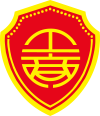- 收藏
- 加入书签
IKEA UK's Strategic Analysis from the Perspectives of Positioning School and Culture School
1Introduction
IKEA was founded in Sweden in 1943 by Ingvar Kamprad; Since then,it has grown to 433 stores in 50 countries (IKEA,2020). Total sales in the UK were [₤]1.9 billion ([₤]2.12 billion in FY19) (IKEA,2020). Due to the coronavirus crisis,the revenue declined for the first time in 2020.
This paper is based on IKEA UK 2020 annual reports analyze the environmental conditions of IKEA in the UK by Porter's five forces model and assessing it from the perspective of resources competitive advantage and sustainability of advantage.
2Theoretical
There are different schools of strategic management. The main points of this paper come from Positioning School and Culture School to analyze the external environment and explore the internal advantages of the company's strategy.
For Positioning School,Porter's view still dominates the strategic text of three primary methods: standardization,differentiation and concentration strategy and the five forces model (Moussetis,2011). Porter (1980) proposed an industry analysis and five-force model to determine the attractiveness of an industry and build a sustainable competitive position for the company among its competitors (Carter et al.,2008). This model captures the main ideas of Porter's theory of sustainable competitive advantage because it emphasizes the five forces that define industry competition rules. He makes managers pay more attention to the external environment instead of traditional SWOT analysis.
The resource-based view (RBV) from Culture school provides the opposite explanation: enterprises should identify their unique resources and then formulate strategies to optimize and utilize these advantages (Clegg,2017). Kraaijenbrink(2010)believe that the resource-based view is not a business theory but should be developed as a sustainable competitive advantage (SCV) theory and suggested that a more subjective and creative value concept is needed.
For strategic research,the single use of one theory is not conducive to considering all factors. Therefore,in the following,evaluating the environment and competitive advantage will correspond to the theory's shortcomings.
3Environment analysis
Companies that want to survive in a specific market need to constantly adapt to the conditions and requirements of the ever-changing dynamic environment. Enterprise environment analysis is critical in this field.
Generally speaking,the higher threats IKEA faces come from existing competitors. IKEA ranked fifth in retailers' market share in the British interior decoration industry in 2020 (Statista a,2020),and IKEA ranked 9th in the e-commerce ranking in the field of electronic furniture and home appliances in 2019 (Statista b,2020). Faced with the threat of high competitors,IKEA can differentiate itself by providing low-cost,high-quality products to maintain a competitive advantage. The threat of new entrants and the supplier's IKEA capabilities do not pose a significant threat. This is mainly due to the high barriers to entry in the furniture industry and the long-term cooperation agreements between IKEA and suppliers.
However,Grundy (2006) criticized the five forces model for overemphasizing the macro analysis of the industry rather than analyzing more specific product segments at the micro-level. It does not consider that the government,regulations,taxation,and complementary organizations are not included in the environmental analysis.
During the first lockdown period in April 2020,the search volume for storage products,office products and green plants increased significantly. For more diversified demand orientation,IKEA can segment the market and design products that meet the needs of diversified spaces.
From the perspective of IKEA,the products are mainly in the traditional furniture and home furnishing industry,and there is not much investment in intelligent home furnishing. In the face of a more intelligent market,IKEA can consider cooperating with the mature,intelligent home industry to form its furniture linkage system and consolidate customer loyalty.
For issues such as politics and taxation,Porter's five forces model is not enough to solve IKEA's problems in the UK. Britain's Brexit policy had some impact on IKEA in the UK in 2017,the introduction of the European Union in the United Kingdom led to price increases,but it did not hinder sales. However,in the long run,the uncertainty of the pound to euro exchange rate may affect IKEA. The ageing population in the UK and the popularity of smart homes may have a corresponding impact on IKEA.
4Competitive Advantage
Porter's positioning school adopts an outside-in strategy,while a resource-based view adopts an inside-out strategy. Internal resources and unique capabilities should drive the company's strategy,regardless of the macroscopic phenomenon. RBV recommends that the strategy's focus is on the company's core competitiveness and the use of unique resources (Carter et al.,2008).
RBV focuses on value creation and value capture (Clegg,2017); this seems to tell managers to develop and obtain VRIN resources and develop a suitable organization. However,there are no clear metrics and measures for how professional managers (Connor,2002). Therefore,the resource perspective is just a way to show sustained competitive advantage,and it does not intend to provide management solutions (Kraaijenbrink et al.,2010).
Although there is no competitive advantage that can last forever,it is helpful for organizations to seek sustainable competitive advantage (Kraaijenbrink et al.,2010). The view of the duplication of resources by other organizations will lead to doubts about sustainable competition. However,the dynamic capability expansion of cultural schools can maintain such a competitive advantage.
Cost-effectiveness is a significant competitive advantage of IKEA. Due to economies of scale and technology integrated with various business processes,IKEA can offer lower prices as a global furniture retailer. IKEA is not the route of luxury home furnishing; its pricing strategy is also what distinguishes the brand from its competitors.
Foss (1996) concluded that the RBV is insufficient as a theory of the firm. The resource-based view is not the theory of the enterprise,and it cannot explain the existence of the enterprise. The sustainability of this advantage requires managers to continue to pay attention to the policy situation,especially in the face of the Brexit situation and the instability of the pound exchange rate,to maintain a price advantage.
In terms of product R&D and investment and the design concept of future home furnishings,IKEA has been able to notice changes in the needs of different customer segments for home furnishing products after the lockdown of the epidemic is committed to making progress in product design and innovation.
In general,IKEA has a unique value from the perspective of resources. However,it lacks a dynamic perspective for the VRIN model,so it is necessary to adjust resources following changes in the environment.
5Conclusion
Strategy is one of the most influential fields in management (Carter,2008). For the strategic school,the paper analyses the ideological theories and strategic models of several vital schools. In terms of the environment,IKEA UK needs to pay special attention to the impact of the social and political environment,especially the adjustment of tariffs and policies after Brexit,to ensure its cost-effective advantage. More importantly,for the brand itself,the perennial reputation has become an essential competitive advantage. However,in the face of future environmental development,continuous improvement and development are required to maintain a sustainable competitive advantage. Moreover,in terms of R&D,IKEA also needs to make adaptive adjustments in product development and product changes that adapt to technological progress.
However,this essay response to the criticisms of the strategic school involved is not comprehensive. The viewpoints of the learning school in the management school and the formulation of emergency strategies are insufficient.
Reference
[1]Carter,C.,Clegg,S.R.,& Kornberger,M.(2008).A very short,fairly interesting and reasonably cheap book about studying strategy.Sage.
[2]Clegg,S.R.,Schweitzer J.,Whittle A.,Pitelis C.,,(2017).Strategy Theory and Practice. Sage.
[3]Connor,T.(2002).The resource‐based view of strategy and its value to practising managers.Strategic change 11(6),307-316..
[4]Foss,N.J.(1996).More critical comments on knowledge-based theories of the firm.Organization science,7(5),519-523.
[5]Grundy,T.(2006).Rethinking and reinventing Michael Porter's five forces model.Strategic Change,15(5),213-229.
[6]IKEA,(2021).IKEA UK ANNUAL REPORT financial year 2020.[Online]. Available at:https://www.ikea.com/ gb/ en/ this-is-ikea/ newsroom/ reports-and-downloads-pube1815961.
[7]Kraaijenbrink,J.,Spender,J.C.,and Groen,A.J. (2010).The resource-based view:A review and assessment of its critiques.Journal of management,36(1),349-372.
[8]R.(2011).Ansoff revisited:How Ansoff interfaces with both the planning and learning schools of thought in strategy.Journal of Management History.
[9]Porter,M.E.(1980).Competitive strategy:Techniques for analyzing industries and competitors.
[10]Statista a,2020.[Online].Available at:https:// www-statista-com.d12243.top/ statistics/ 502990/ upholstery-retailers-market-share-united-kingdom-uk/.
[11]Statista b,2020.[Online].Available at:https:// www-statista-com .d12243 .top/ forecasts/ 870313/ top-online-stores-furniture-appliances-united-kingdom-ecommercedb.
[12]Ward,P.T.,and Duray,R.(2000).Manufacturing strategy in context: environment,competitive strategy and manufacturing strategy. Journal of operations management,18(2),123-138.






 京公网安备 11011302003690号
京公网安备 11011302003690号


